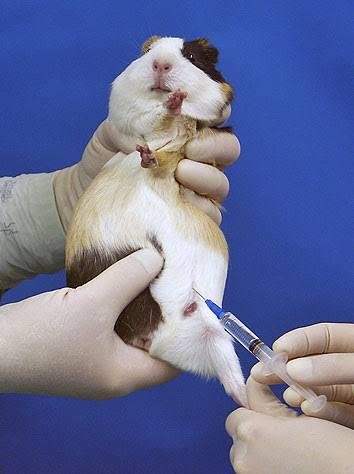PETS VACCINATION SCHEDULE PROTOCOLS
Dr Amit Bhardwaj, Pets Surgery specialist,Pune
Vaccines help prepare the body’s immune system to fight the invasion of disease-causing organisms. Vaccines contain antigens, which look like the disease-causing organism to the immune system but don’t actually cause disease. When the vaccine is introduced to the body, the immune system is mildly stimulated. If a dog is ever exposed to the real disease, his immune system is now prepared to recognize and fight it off entirely or reduce the severity of the illness.
Dog vaccinations will help your dog to be protected against some of the most common and most dangerous infectious diseases. For young dogs especially, it is critical to get the right vaccinations according to the puppy vaccination schedule to help build up their immunity.
Dog vaccinations will not only protect your dog, they will also ensure your dog can’t infect others in their local dog community. Early dog vaccinations (see below for the adult dog vaccination schedule as well as the puppy vaccination schedule) will also allow you to socialise your dog earlierwith other dogs. An up to date dog vaccination history is often required in places where dogs will closely interact with each other, such as boarding kennels, dog training classes and doggy day care.
Immunisation is a relatively easy task to get organised. All vets have the ability and the equipment to quickly and easily immunise your pet against the biggest threats to their health.
Even if your dog doesn’t mix with other dogs or you live far away from other people and pets, immunisation should be an essential part of any dog’s health regime.
Vaccinating your puppy or adult dog means the same as it does for humans. Vaccines are health products that trigger the animal’s immune system to fight a specific infectious agent, without making the animal sick. Generally, the germs in the vaccine are weak or dead. In fact some don’t even contain any of the germs, they are simply there to mimic the germs.
Dog and puppy vaccinations are basically a training camp for your dog’s immune system. The white blood cells in his body will produce proteins (so called antibodies) that will, together with other white blood cells, fight the infectious agent (called antigens). It is recommended to top up your dog’s vaccinations frequently to make sure his body still has enough of the trained antibodies to be able to fight the infectious germs when needed.
CLASSIFYING VACCINES
The vaccination guidelines separate vaccines into 2 groups:
• Core: Vaccines that offer protection against highly contagious, life-threatening infections or infections that pose a significant threat to human health (eg, rabies).
• Noncore: Vaccines that offer protection against less serious health threats to dogs or threats that pose a regional health risk.
It is ultimately the decision of the individual veterinarian or practice to establish which vaccines in a protocol are designated core or noncore.
Table 1. Canine Core & Noncore Vaccines
Canine Core Vaccines • Canine distemper virus (MLV)
• rCanine distemper virus (recombinant)
• Canine parvovirus (MLV)
• Canine adenovirus-2 (MLV)
• Canine rabies virus (killed)
Canine NonCore Vaccines Bordetella bronchiseptica
• Intranasal Bordetella bronchiseptica (avirulent live bacteria)
• Parenteral Bordetella bronchiseptica (cellular antigen extract)
• Oral Bordetella bronchiseptica (avirulent live bacteria)Note: Intranasal products may be combined with:
• Parainfluenza virus (MLV) only or
• Parainfluenza virus (MLV) + adenovirus-2 (MLV)
Leptospirosis
• Leptospirosis (killed)
Note: The use of a 4-serovar vaccine is recommended over a 2-serovar product.
Lyme Disease
• rBorrelia burgdorferi (recombinant OspA)
• Borrelia burgdorferi (killed whole cell bacterin)
Canine Influenza Virus
• Canine influenza virus (killed)
Rattlesnake Envenomation
• Crotalus atrox (toxoid)
Note: For use in dogs at risk for Western diamondback rattlesnake envenomation.
CORE VACCINES
Vaccines designated as core should be administered to all dogs. The AAHA Canine Vaccination Task Force defines the following vaccines as core:
• Distemper virus (CDV)
• Parvovirus (CPV)
• Adenovirus-2 (CAV-2)
• Rabies (RV).
•
Initial Vaccination of Young Dogs
Vaccination Other Than Rabies
Current recommendations for initial vaccination of young dogs stipulate that, with the exception of rabies, 3 doses of a combination core vaccine be administered between 6 and 16 weeks of age. In practice, a single combination dose is typically recommended for administration at 2, 3, and 4 months of age (Table 2).
Dosing Interval. Today, most manufacturers offer combination core vaccines with the recommendation to administer 2 doses by 12 weeks of age.3 The guidelines, however, emphasize the importance of administering a third dose (or the final dose) between 14 and 16 weeks of age. This recommendation is based on observations that, in some dogs, the level of maternally derived antibody may be sufficiently high to interfere with vaccines administered at 12 weeks of age, particularly CPV.
Recombinant Technology. The recombinant canine distemper virus (rCDV) vaccine can be used interchangeably with the modified-live canine distemper virus (MLV CDV) vaccine in practice. Characteristics unique to recombinant technology have been addressed in the guidelines:
• The rCDV vaccine is incapable of replicating in dogs and, therefore, reversion to a virulent CDV is not possible.1
• In addition, the rCDV vaccine uniquely immunizes young dogs as much as 2 weeks earlier than conventional MLV CDV vaccines.4-7 For this reason, rCDV vaccination may have significant advantages over MLV vaccination in young dogs at risk for exposure to CDV.
•
Rabies Vaccination
The first dose of rabies vaccine should be administered in accordance with state or local statute.
• Within the U.S., rabies vaccination should not occur in any dog (or cat) less than 3 months of age.
• Initial vaccination is generally not regarded to confer immediate immunity against rabies. In most states, a dog is not legally immunized against rabies until 28 days following initial vaccination.8
• Rabies vaccination requirements for dogs vary significantly among states: In some states, rabies vaccination for dogs is not specifically required. Within these states, however, a local (city or county) rabies vaccination ordinance may be in effect.
• Where no state or local ordinance exists, veterinarians are encouraged to recommend rabies vaccination in accordance with guidelines from the National Association of State Public Health Veterinarians;8 a suggested protocol is outlined in Table 2.
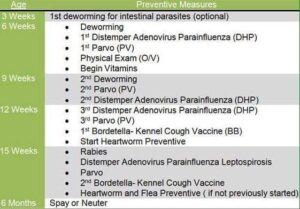
•
Table 2. Summary Recommendations for Vaccination of Dogs
Vaccine Initial Vaccination Revaccination
Core Vaccines
Distemper (MLV or r) +
Parvovirus (MLV) +
Adenovirus-2 (MLV) • Administer 3 doses between 6 and 16 weeks of age.
• Single dose at 8, 12, and 16 weeks of age is commonly recommended. • Administer a single dose no later than 1 year following the last dose in the initial series; then, every 3 years or longer thereafter.
Option: Although parainfluenza virus vaccine is commonly administered parenterally in combination with the above vaccines (DA2PP), parainfluenza has been classified as a noncore vaccine (see below).
Rabies (killed) • Single dose usually given at 12 or 16 weeks of age (local/state statutes apply). • Administer a single dose of vaccine within 12 months (a 3-year rabies vaccine may be administered at this time); then every 3 years thereafter or as required by law.
• In the U.S., all states now recognize 3-year labeled rabies vaccines.
NonCore Vaccines
Intranasal
B bronchiseptica (AvLB)May be combined with:
• Parainfluenza virus (MLV) or
• Parainfluenza virus + Adenovirus-2 (MLV) • Administer a single dose (intranasal only) at 12 or 16 weeks of age (some authors recommend a dose at 12 and 16 weeks).
• Maternal antibody interference is not a factor for vaccines administered intranasally; manufacturers may recommend initial vaccination as early as 3 or 4 weeks of age. • Where risk of exposure is sustained, administer a single dose annually.
Parenteral
B bronchiseptica (KB) • Administer 2 doses, 2 to 4 weeks apart, regardless of age. • Annual booster recommended by manufacturer (duration of immunity data has not been published).
Oral
B bronchiseptica (AvLB) • Administer a single dose into the buccal pouch as early as 8 weeks of age. • Administer a single dose into the buccal pouch annually.
Leptospirosis (KB) 4-serovar
Administration of 2-way vaccine is currently NOT recommended • Administer 2 initial doses, 2 to 4 weeks apart; do NOT administer the first dose prior to 12 weeks of age.Note: In small breed dogs, delay initial dose until after completion of initial CORE series • Where risk of exposure exists, administer a single dose annually.
Lyme disease
(recombinant OspA or KB) • Administer 2 initial doses, 2 to 4 weeks apart; do NOT administer first dose prior to 12 weeks of age unless risk of exposure is high.Note: In small breed dogs, consider delaying initial dose until after completion of initial CORE series. • Where risk of exposure exists, administer a single dose annually.
Canine influenza virus
(killed) • Administer 2 initial doses, 2 to 4 weeks apart. • Manufacturer recommends annual revaccination where risk of exposure exists.
• Duration of immunity has not been established.
Crotalus atrox (toxoid) is conditionally licensed to aid in prevention of signs following envenomation by Western diamondback rattlesnake.
Canine coronavirus vaccine is NOT recommended.
AvLB = avirulent live bacteria; KB = killed bacterins; MLV = modified-live virus; r = recombinant
Revaccination Intervals in Adult Dogs
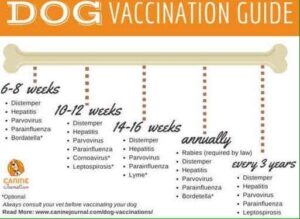
Revaccination Other Than Rabies
A single dose of combined core vaccines (CDV/CPV/CAV-2) should be administered within 1 year of initial core vaccination, regardless of the product used.1 This recommendation ensures that a patient receives core vaccines at an age when maximum (protective) response to the antigens can be expected.
With the exception of rabies vaccine, adult dogs should be revaccinated with a single dose of core vaccines (CDV/CPV/CAV-2) every 3 years or longer, regardless of the product used.1 This recommendation highlights 2 principal facts:
1. The duration of protective immunity conferred by administration of core vaccines in adult dogs extends at least 5 years, and probably longer.
2. With the exception of rabies vaccination, veterinarians have considerable latitude in recommending vaccination booster intervals.1
While vaccine manufacturers may recommend administration of “annual boosters” for adult dogs, the recommendation does not constitute a legal mandate to do so. Most manufacturers include minimum duration of immunity data on product package inserts, which meets or exceeds 3 years.3
Rabies Revaccination
Where rabies revaccination is required for dogs, a single dose is typically required within 1 year following the initial dose, regardless of the dog’s age when the initial dose was administered.8 Generally, a dog that is not revaccinated within 1 year following the initial dose is legally not immunized.
In most states, the second dose of rabies vaccine in the initial 2-dose series may be labeled as a 1- or 3-year rabies vaccine; the duration of immunity following administration is contingent on this product labeling. In some states, however, local statutes may impose requirements that are stricter than state requirements (eg, annual rabies vaccination). Veterinarians should be familiar with local rabies immunization requirements for dogs.
A vaccine adverse reaction (or adverse event) refers to any undesirable, or unintended, effect associated with the administration of vaccines, including failure to immunize. Unfortunately, vaccine adverse reactions in veterinary medicine are significantly underreported, making it impossible to determine actual adverse event rates. However, considering the number of vaccines administered yearly, it is generally agreed that adverse reactions are relatively uncommon in dogs.
Despite lack of data, certain risk factors have been identified. The guidelines include recommendations on:
• Mitigating risk
• Treatment of acute-onset reactions
• Revaccination of patient with known or suspected vaccine adverse event history.
Adverse Reactions
Because vaccines are biologically active products and potent immunostimulants, minor reactions can be expected in any dog. Common adverse reactions reported to manufacturers include:
• Postvaccinal lethargy
• Pain (discomfort)
• Inappetance
• Lumps at the injection site.
Owners should be advised to anticipate minor reactions such as these for 1 to 2 days after vaccination.
Advise clients to contact the practice if the following signs develop: vomiting, diarrhea, seizures, difficulty breathing or rapid respirations, facial swelling, or collapse. If a patient’s condition worsens or shows no improvement within 48 hours, follow-up examination is recommended.
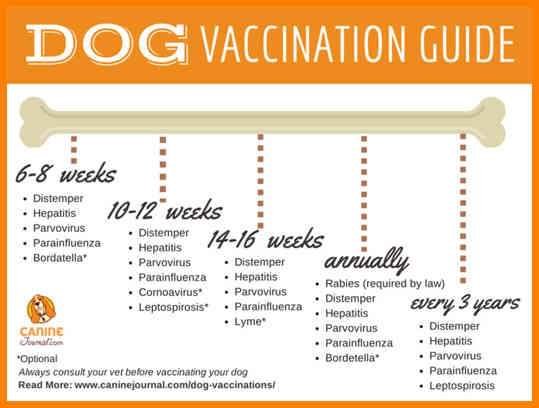
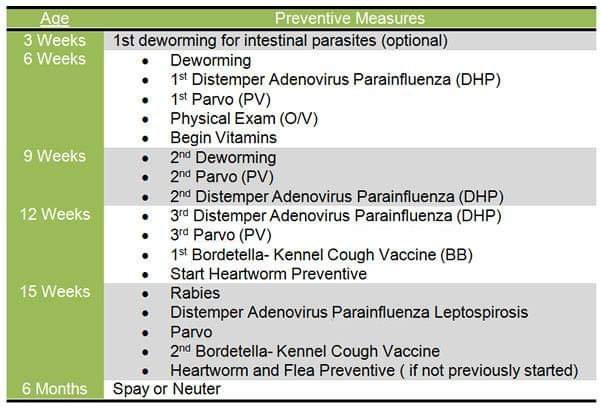
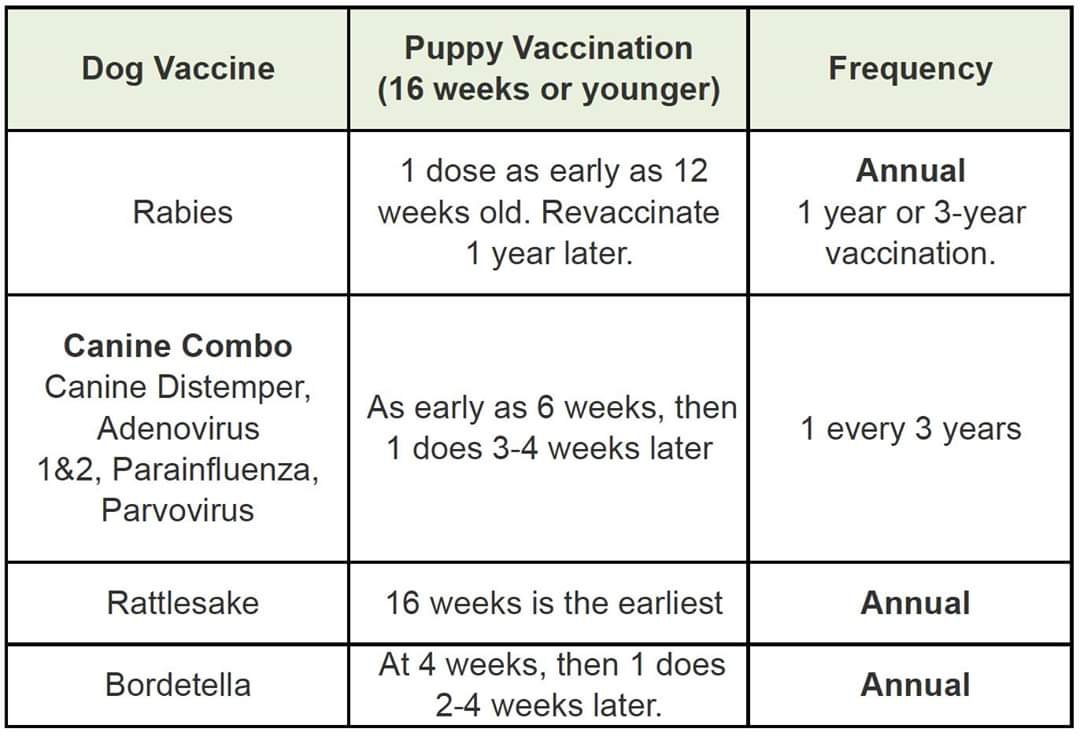
GUIDELINES BEFORE VACCINATION
Vaccine only Healthy dogs.
Deworn and detick before Vaccination.
Vaccinate in early morning hours or on evening hours.
Advise the owner not to put the dog under stress(i.e Vigorous exercise) For 3 days after Vaccination.
Advise the owner not to give a bath to the dog a day before and 3 days afterVaccination.
Advise the owner not to feed the dog with heavy diet such as eggs, meat, beaf etc; and give only light feeds like bread,buiscuits,rice for 3 days after Vaccination.
Reference:On request.


